Deltiology is the hobby of collecting and studying postcards.
This page illustrates how the approximate age of a postcard can be determined by looking at the card’s features and format. Each “era” of postcards coincides with changes in postal regulations, printing technology and public demand.
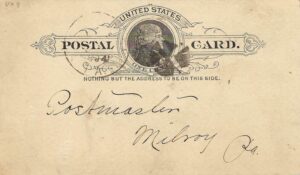
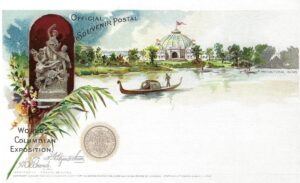
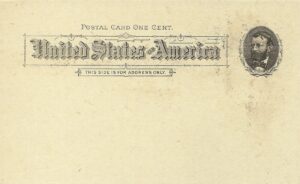
At the 1893 Columbian Exposition in Chicago, a set of souvenir cards were issued with colorful images printed on government-issued postal cards. These are considered to be the first privately printed picture postcards.
By the 1890s, privately printed cards with text and later printed images were allowed to be sent through the mails. The earliest privately printed postcards are called “Pioneer” cards.
The clue that makes this a Pioneer card is the 2 cents postage rate printed in the upper right corner. Privately-printed postcards in the Pioneer era required 2 cents postage (the same as letters), as opposed to the government-issued postal cards which could be mailed for one cent.
Also, the “Souvenir Card” text is consistent with being an early Pioneer postcard.
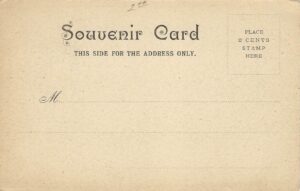

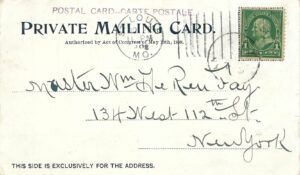

In 1898, Congress passed a law to regulate privately-printed postcards, and required a reference to the Act of Congress on the address side along with the words “Private Mailing Card”. These cards date from 1898 to the early 1900s.
The next era of postcards is called “Undivided Back”, where the words “Post Card ” replaced “Private Mailing Card” but the address side still did not allow a message to be written. These cards date to the early 1900s.
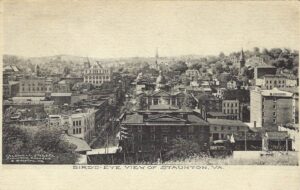
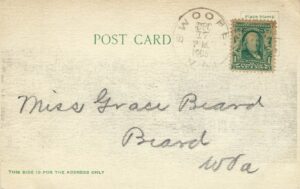
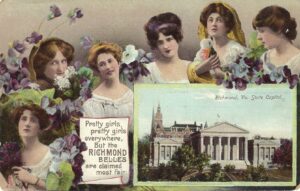

By 1907, postal regulations allowed cards to have a “Divided Back” with the addressee on the right side and a message on the left side. This allowed the other side of the card to have images and text without being obscured by the sender’s message.
The “Divided Back” format on the address side has continued to the present time. However, postcards continued to evolve with changes in printing technology, which has given rise to additional eras.
By 1915, the “White Border” era came into being. Many cards up to that time had been printed in Germany. During the World War, sentiment changed and postcards were no longer imported from Germany. As a result, postcards became more expensive to print. It was less expensive to print cards with a border, rather than having the image go all the way to the edges. The White Border cards used less ink. These cards were published until about 1930.

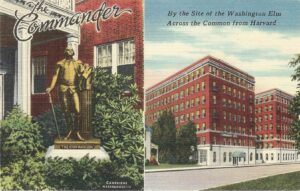

“Linen Cards” were popular in the 1930s and 1940s. The cards are more colorful, and have a textured surface.
Modern cards are called “Chrome” cards because of the chromolithography process. These cards date from the 1950s forward.
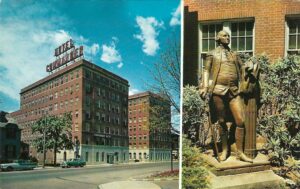
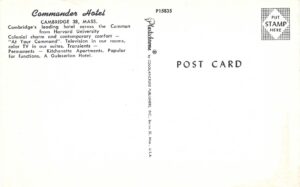
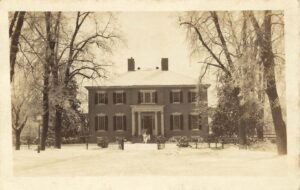
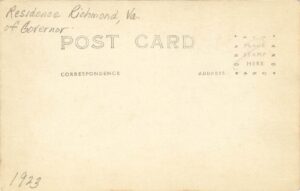
“Real Photo” postcards began in the early 1900s, as photography became more widely available and popular. These postcards are printed by a photographic process, rather than the lithographic process used for all the cards described above.
Many Real Photo postcards are one of a kind, while some were mass produced.

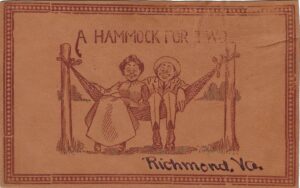
A few postcards were made from other materials, such as aluminum, leather and wood. Here are two examples.
Publishers of postcards often utilized a numbering system for their cards, making it possible to identify a series or group of postcards issued. In addition, some publishers used logos on either side of their postcards. Early examples of these cards were published by the Detroit Publishing Company and The Rotograph Company.
